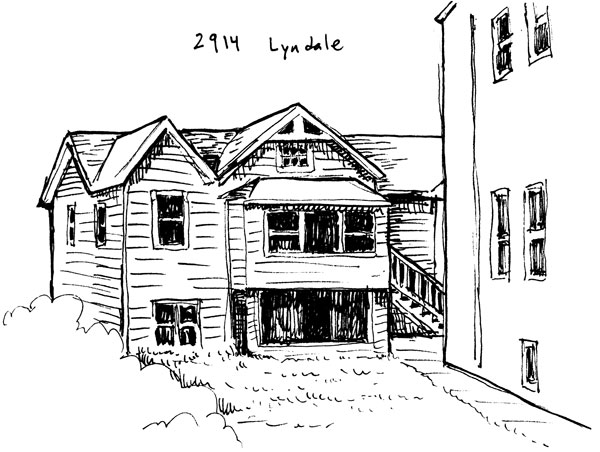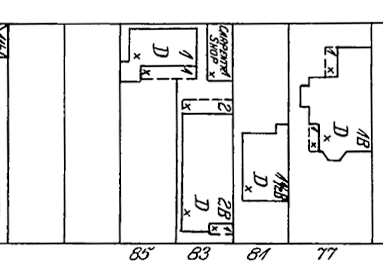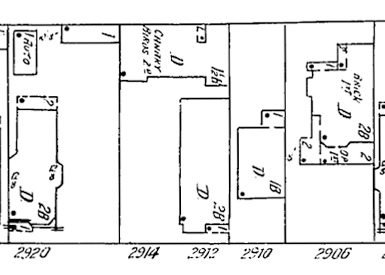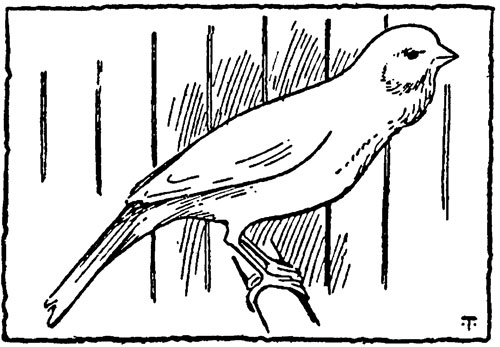
The Songbird Chorus
William Kuschel purchased the two empty lots at 2912 & 2914 W. Lyndale in 1882. Kuschel worked as a carpenter and cabinetmaker, so it's possible he built the two-story house at 2912 himself, which was completed some time before 1886. Ten years later, in the insurance map below we can see the house at 2912 (83 Johnston St.) as well as Kuschel's workshop in back and a new house at 2914 next to it.

Detail of 1896 Sanborn Insurance Map
The 1894 building permit for the new house at 2914 describes the building as a 1-story cottage measuring 21 by 44 feet. Instead of facing the street alongside 2912, the house was built near the alley across both lots. The two lots to the west were still undeveloped land, so perhaps this seemed a better way of preserving some open space for sunlight and a garden or side yard.
August Janke bought both of the buildings in 1897. Janke worked as a carpenter, and put those skills to use in enlarging the cottage by joining it to the workshop and adding a second floor, which he set up as an aviary for breeding songbirds. In a 1921 insurance map of the same location shown below, the business use of the second floor as a canary breeding farm is noted in tiny letters.

Detail of 1921 Sanborn Insurance Map
Just a few years after buying the property, Janke had bred enough birds to start selling to customers and took out a classified ad in the December 15, 1901 Chicago Tribune:

The 240 birds customers could choose from would not have included all the older breeding birds or the young birds not yet fully grown, so there must have been a great number of animals in the second floor of the house at 2914.
Janke's canaries were "roller" canaries, so called for their rolling and trilling song. In the town of Sankt Andreasberg in the Harz mountains of Germany, where the birds were originally used in the mines to detect carbon monoxide, miner Wilhelm Trute in the 1860s bred canaries which were prized above all others for their delightful song.
Descendants of these Andreasberger birds eventually came to England and the United States. Breeders selected birds which sang quietly with beaks closed, in deep notes and liquid sounds described by fanciers in such inscrutable terms as "hollow rolls" or "water glucks".
The best birds could sing a wide variety of melodies, up to half a minute long each. Some breeders taught their birds new songs by keeping a nightingale in a nearby cage, as the canaries picked up tunes from influences around them. Young birds needed extensive training with older tutors to learn the repertoire and proper style of singing.
In the days before radio and music-on-demand, it must have been quite a thrill to own a singing canary to fill the house with song. How much more so to have nearly 250 singers in the house? Would a passerby walking down the sidewalk along Lyndale have been able to hear the pleasant chorus? Or would the smell of so many birds have been more noticeable?

Illustration from The Roller Canary by H.W. Gutierrez, 1900
August Janke advertised his canaries in the Tribune up until at least 1920. He passed away in 1926 at age 69 and his step-daughter Alma Douglas inherited the two houses.
The little house at 2914 was torn down after a fire in 2009. The tall two-flat in front at 2912 was demolished in 2017 for a new condo building which takes up both lots.
